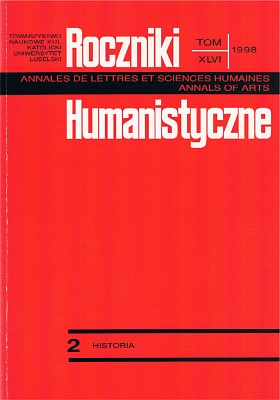The Struggles of the School Youth in the First Half of the 19th Century for a Polish Image of School
Abstract
The repressive measures after the November rising were launched not only against the older society, the people who actually took part in the battle or supported the insurgents, but also the school youth, especially those who attended secondary schools and gave a mass support for the rising. In Kronika szkół Krolestwa Polskiego (The Chronicle of the Schools of the Polish Kingdom) we find that the political events at home from the turn of 1830 and 1831 made the school authorities to end classes earlier and close all the schools, the regulation which lasted until August 1833, that is almost three years. In April 1833 a new school law was proclaimed, which dealt mainly with elementary schools. After detailed investigations, 26 teachers were proved to have participated in the rising. The students who had been engaged in the rising were punished by military courts and the punishments were usually very severe. The new educative system consisted mainly in preventive actions towards the youth through harsh punishments, intimidation and terror. The aim of education was to form young people into loyal, humble and obedient citizens, respecting the “true authorities” and the “good” czar. Terror and Russification, however, had brought about an effect opposite to the intended one, for in all the insurgent actions for national independence the number of young people was considerable. The students and teachers of the Zamojski secondary school in Szczebrzeszyn were most active in their patriotic endeavours. Therefore the school was eventually liquidated in 1852. Due to their active part in the Spring of the Peoples the young people and teachers of the real higher school in Kalisz, the school was closed for two years. After some purges among the youth and teachers, it was re-opened and new students were recruited. It was a characteristic of the patriotic activity of the students of Warsaw secondary schools that they extensively read forbidden literature, organized self-education mainly in the history of Poland, geography and national literature. In a similar activity were involved young people from the Lublin secondary school and its subordinate district schools.
Another form in which the Polish youth could resist was to organize various illegal unions, societies and other often loosely connected groups, governed by some basic, principal idea. Within this form of self-defence and patriotic activity the students of the secondary school in Łuków were particularly active. Having enrolled at the Chełm seminary, its graduates established there a similar organization under the name “Fraternity”.
Copyright (c) 1998 Roczniki Humanistyczne

This work is licensed under a Creative Commons Attribution-NonCommercial-NoDerivatives 4.0 International License.





